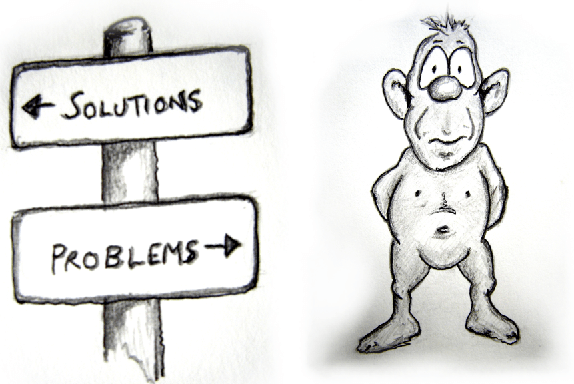 Your comfort zone is either expanding or contracting.
Your comfort zone is either expanding or contracting.
Comfort zones, what are they?
We are always in a state of expansion or contraction, growing or shrinking, progressing or regressing. Let’s take our muscles, or even better, the muscles of a football player, or athlete, for example. After a period of rest and reduced activity, at the end of a season, the muscles have begun to lose strength and shrink before the training for the new season begins.
Those first few training sessions result in stiffness and soreness as the muscles get pushed beyond what has become comfortable use in the off season. They start to feel discomfort. The athlete must push beyond what feels comfortable to grow in strength, fitness and endurance and this will continue throughout the season. Every time they push past what is comfortable and break through that comfort zone they are growing. If they don’t push past that comfort zone they are stagnating or regressing.
This push past the comfort zone must be done gradually to avoid injury. This is true for athletes and also true for our emotional comfort zone that is the limit of the positive beliefs we have about ourselves – the limit of our positive self-esteem.
 To grow we must do things that make us feel uncomfortable.
To grow we must do things that make us feel uncomfortable.
Outside our comfort zone are the negative limiting beliefs about ourselves; the ego. The ego is always telling us we are not good enough, not accepted, not approved of and not worthy. Many of these beliefs were formed when we were children – when people used disconnecting habits on us, or withdrew connecting habits – beliefs formed before we had a rational faculty of mind. Imagine a ball full of positive energy, positive beliefs, sitting in the centre of a field of negative energy and negative beliefs. The field of negative beliefs places pressure and stress on the ball of positive beliefs and the positive beliefs are pushing back – the ball expanding and contracting. For the ball to expand, we must push past negative beliefs that make us feel uncomfortable. To grow we must do things that make us feel uncomfortable. The negative beliefs form a barrier we must push through.
Let’s take a look at public speaking, said to be the number one fear of many people. Why is it a fear? It’s the want for approval. The fear that people won’t accept the way we look, what we have to say or how we are saying it. If we take a logical look at this fear, we can see it is an irrational fear and without justification; impossible to satisfy. It is impossible to get the approval of everyone. In fact it is almost impossible to get one person’s approval all the time. If I could get my wife’s approval all the time it would be fantastic, but in reality it won’t happen, I am not perfect. If you had 51% of people’s approval, you could become prime minister of the country. This limiting fear, the fear that we will not be approved of, is the discomfort we feel pushing back on our comfort zone, making us feel uncomfortable. Our comfort zone is the limit of our positive beliefs.
The amazing thing about expanding your comfort zone is that, when you tackle one limiting belief, many other similar ones fall away; you grow exponentially and increase your self-esteem. When we are growing, our self-esteem is high and when we are shrinking, our self-esteem is low. When it comes to public speaking, every time you push past the fear it becomes easier. But, like anything, it must be done gradually. In my experience, it can take 4 to 6 weeks to change the habit patterns of the mind.
I had a friend who had no problem with public speaking. He said he loved it and asked me what the difference was between him and so many others that seemed so terrified. I told him that he expected everyone would like him and didn’t bother about wanting their approval. He agreed that he did expect everyone to like him. I looked at him and said: ‘Not everyone is going to like you.’
‘That’s their problem not mine’ was his reply.
Apart from comfort zones formed by the way we have been treated in life; we can also develop a fear from a trauma that can become a phobia, or a problem with anxiety or depression. If our comfort zone is limited by a phobia, sometimes the cause of this phobia isn’t self-apparent. Let me tell you about a phobia I discovered in myself in my late twenties.
The first time I went snorkelling was in my twenties. Friends gave me a mask and snorkel and we waded off into the sea. I was looking forward to seeing this new underwater world. I put my face into the water and could not for the life of me take a breath through the snorkel. I was crippled by fear – something was telling me I couldn’t breathe with my face underwater. Lifting my head from the water and looking around at my friends all snorkelling away, I tried again but the breath wouldn’t come. My ego being what it was at that time, I watched my friends snorkel and as each one popped his head up I held my breath, put my head down and pretended to snorkel. When we returned to the beach I told them how much I’d enjoyed it and was off to buy a mask and snorkel for myself. Over the next month I would get into the bath each night and practise. One or two breaths on the first session, but increasing as the days went on until I could spend a full hour with my head submerged, breathing through a snorkel. Not one to do things by halves, my next trip to the beach was to scuba dive. I persuaded a friend who scuba dived to take me out and teach me to dive. We jumped out of his boat with a compressor running in the background feeding air to the regulators in our mouths. Thirty feet below us was the sea bed. I was bobbing like a cork on the surface when he suggested that I might not have enough lead weight around my waist. I didn’t like the idea of carrying this lead anchor around my waist, but I was told it was required to compensate for the buoyancy of the very uncomfortable and very thick wet suit he had arranged for me to wear. I told him I thought the current weight would be fine. Breathing out, he started to descend. Breathing out, I was still bobbing on the surface like a cork. Eventually he was on the bottom when I decided to duck dive down and, thrashing like a fish out of water I made it to the bottom. The first thing I noticed was the excruciating pain in my ears, and the second thing I noticed was my feet were still pointing to the surface. Upside down, I grappled with the weeds on the sea bed to try to keep myself on the bottom. He gave the thumbs up signal rehearsed in the boat. With both hands busy, I smiled and the water filled the mask. Like an unguided missile, I launched out of the water breeching like a hump – backed whale.
We returned to the boat and removed my mask to find it filled with watery blood. ‘Didn’t you equalise?’ my friend asked.
‘What’s that?’ I asked. The vacuum from the water pressure had sucked blood into my sinuses, I found out later.
 We extend our comfort zones by releasing the negative emotion attached to the fear.
We extend our comfort zones by releasing the negative emotion attached to the fear.
‘Maybe we should give it a miss’, he said. I knew, at that point, that giving it a miss would mean I would not be coming back. We adjusted the weight. I learned how to equalise the pressure and I dived for the next thirty minutes without pain or a problem. Within three years I was a scuba diving instructor. Within five years I was teaching instructors and diving in the limestone caves of South Australia, my comfort zone well and truly extended. This extension of my comfort zone had been through desensitisation. Each small step outside the comfort zone tackled the limiting belief and I was growing exponentially. Had I not tackled this limiting belief, I would have missed out on a whole range of wonderful experiences, and a whole group of new friends in the process. We extend our comfort zones by releasing the negative emotion attached to the fear.
We can overcome limiting beliefs and extend our comfort zones regardless of the cause of these limiting beliefs. By extending our comfort zones we increase our self-esteem and grow as people. The limiting beliefs are not you; they are irrational fears designed to protect you. But in the end they only limit you. They are just an electro chemical process in the body, created by an electro chemical process in the brain, created by negative conditioning from the past. They are a distorted view of who you are – an illusion of who you are.
The workplace is often a place where people work within their comfort zones unless a positive environment and culture is created to change this. If a boss manager uses disconnecting habits on employees, they will be afraid to fail, and this closes down creativity. They will be afraid they won’t be approved of. The comfort zone of a person under a boss manager will contract and shrink as the disconnecting habits tap into limiting negative beliefs.
With a lead manager we will experience the opposite – the employee’s comfort zones will expand and grow as the connecting habits are used on them. They will become more creative and push to achieve greater goals with positive expectations. They can step out of their comfort zones with support and encouragement. They will enjoy an environment and a culture of challenge, support and encouragement.
To grow as a person we need to take on challenges that make us feel uncomfortable. When we look at goal setting we will see that the goals should be big enough to scare us a little and excite us a lot.
When you start to step outside your comfort zone you begin to realise that there is nothing to fear but the fear itself. So go out now and do something that challenges you; do something that makes you feel uncomfortable. Push yourself beyond your comfort zone, increase your self-esteem and grow into your true self.






